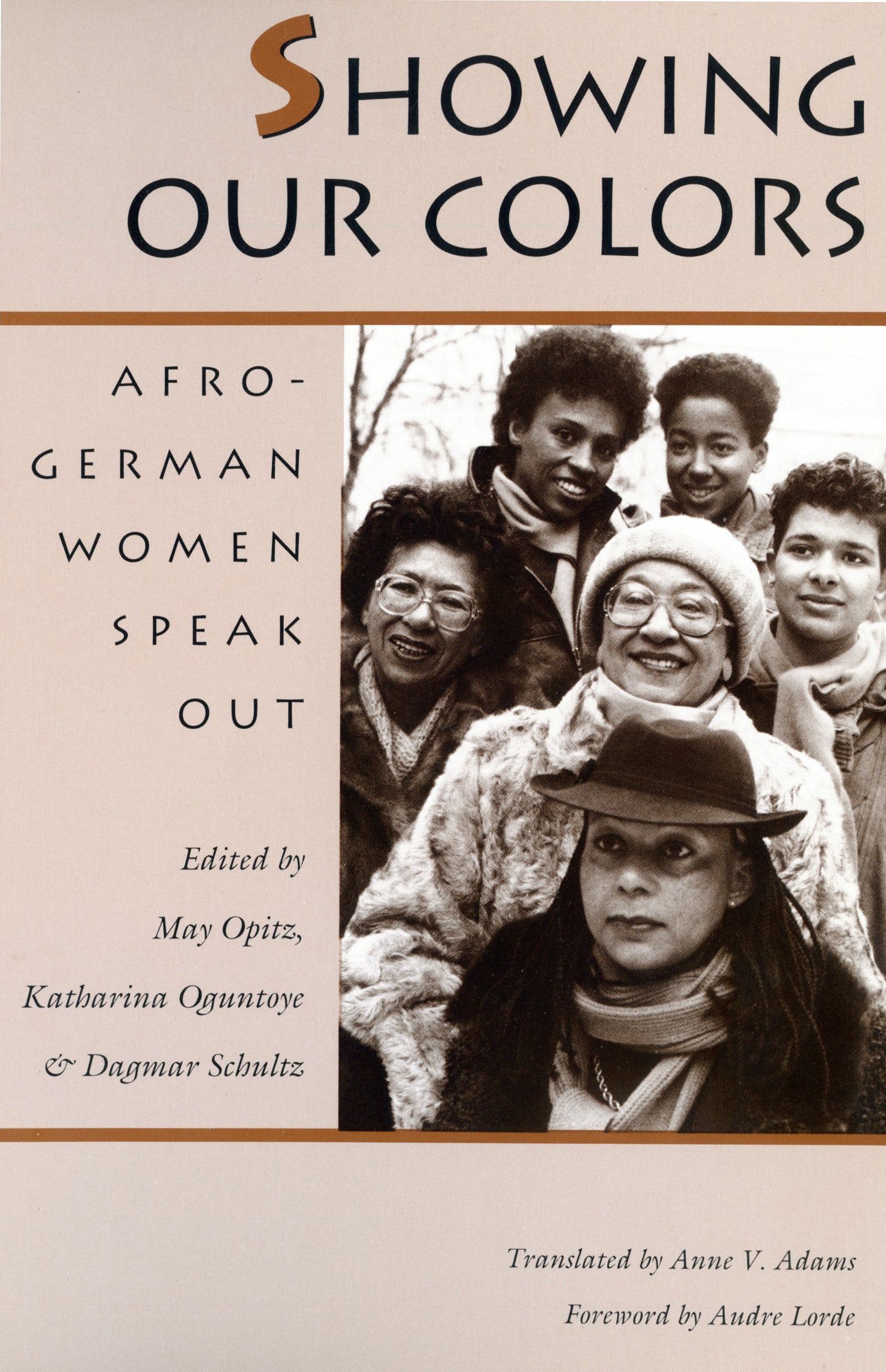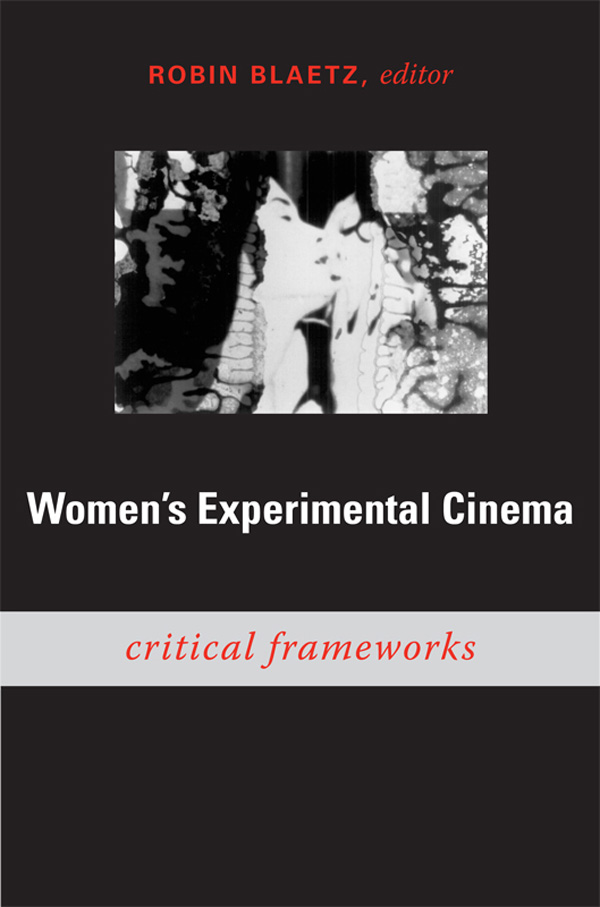May Opitz, Katharina Oguntoye, Dagmar Schultz (eds.): Showing Our Colors: Afro-German Women Speak Out (1991)
Filed under book | Tags: · black people, colonialism, feminism, germany, history, race, racism, sexism, women

“ISD (Initiative Schwarze Menschen in Deutschland), ADEFRA (Schwarze Frauen in Deutschland), Neuen Schwarzen Bewegung, all began in the 1980s in Berlin, centred around Freie Universität where Dagmar Schultz was professor. She invited Audre Lorde as a visiting professor from 1984, where May Opitz (from 1992 May Ayim) and Katharina Oguntoye attended her seminars. Out of this came Black History Month in Germany in 1991, and Farbe bekennen: Afro-deutsche Frauen auf den Spuren ihrer Geschichte, published in 1986.” (Source)
First published in German as Farbe bekennen: afro-deutsche Frauen auf den Spuren ihrer Geschichte, Orlanda Frauenverlag, Berlin, 1986.
English edition
Foreword by Audre Lorde
Translated by Anne V. Adams
Publisher University of Massachusetts Press, Amherst, MA, 1991
ISBN 0870237594, 9780870237591
xxv+239 pages
Reviews: Amina Mama (Feminist Review, 1993), Leslie Morris (German Quarterly, 1994), George Junne (Explorations in Sights and Sounds, 1993), Laura Freisberg (BR, 2020, DE).
Publisher (new ed., 2020, DE)
Publisher (EN)
Wikipedia
WorldCat
DJ Lynnée Denise: Toni Morrison Inna London: Sonic Connections and the Literary Imagination (2020)
Filed under music video, video | Tags: · black people, djing, literature, women
“In this work, DJ Lynnée Denise offers a layered audio-visual response to the 1986 Guardian talk with Toni Morrison at the ICA. The visual essay brings together intimate reflections and propositions framed by Morrison’s 1992 novel Jazz. DJ Lynnée Denise explores the Black Atlantic sound, visuals and craft to render the life worlds behind Morrison’s oeuvre visible. Morrison’s writing is expanded into a visual vocabulary in which transatlantic conversations and new connections emerge. A praxis in translation.
Claudia Jones. Eartha Kitt. Fannie Lou Hamer. Lorraine Hansberry. Winnie Mandela. Sarah Vaughn. Lady G. Sister Rosetta Tharpe. Elizabeth Cotton. Augusta Savage. Judy Mowatt.
DJ Lynnée Denise creates what Louis Chude Sokei calls a diasporic “echo chamber” of Black women’s craft animated by the bricolage of drum and bass in which the sonic influences of Black Britain and Black America are an electronic undercurrent. The drum machine mixed with Morrison’s gestures, mannerisms, and reading speak to how Morrison’s is experienced through a multi-sensory engagement.
In Morrison’s interview with A.S. Byatt, she references the important inspiration of paintings in her writing practice and the relationship between musicians and their audience. In this work, a visual remixing of worlds happens in which Black girls jumping rope, everyday live in Harlem, the market space in Brixton are the aesthetics to Morrison’s writing or in her words “the access to the scene”. In DJ Lynnée Denise’s rendering, “the scene” is about Black wayward diasporic women whose craft is read through astrology, the politics of refusal and the secrets of Black social life.”
Publisher Institute of Contemporary Arts, London, March 2020
28 minutes
via ICA’s Five Volumes for Toni Morrison, HT dubravka
Interview with author: Chandra Frank (Journal of Popular Music Studies, 2020).
MP4 (218 MB)
Comment (0)Robin Blaetz (ed.): Women’s Experimental Cinema: Critical Frameworks (2007)
Filed under book | Tags: · avant-garde, body, cinema, experimental film, feminism, film, film criticism, film history, women

“Women’s Experimental Cinema provides lively introductions to the work of fifteen avant-garde women filmmakers, some of whom worked as early as the 1950s and many of whom are still working today. In each essay in this collection, a leading film scholar considers a single filmmaker, supplying biographical information, analyzing various influences on her work, examining the development of her corpus, and interpreting a significant number of individual films. The essays rescue the work of critically neglected but influential women filmmakers for teaching, further study, and, hopefully, restoration and preservation. Just as importantly, they enrich the understanding of feminism in cinema and expand the terrain of film history.
The contributors examine the work of Marie Menken, Joyce Wieland, Gunvor Nelson, Yvonne Rainer, Carolee Schneemann, Barbara Rubin, Amy Greenfield, Barbara Hammer, Chick Strand, Marjorie Keller, Leslie Thornton, Abigail Child, Peggy Ahwesh, Su Friedrich, and Cheryl Dunye. The essays highlight the diversity in these filmmakers’ forms and methods, covering topics such as how Menken used film as a way to rethink the transition from abstract expressionism to Pop Art in the 1950s and 1960s, how Rubin both objectified the body and investigated the filmic apparatus that enabled that objectification in her film Christmas on Earth (1963), and how Dunye uses film to explore her own identity as a black lesbian artist. At the same time, the essays reveal commonalities, including a tendency toward documentary rather than fiction and a commitment to nonhierarchical, collaborative production practices. The volume’s final essay focuses explicitly on teaching women’s experimental films, addressing logistical concerns (how to acquire the films and secure proper viewing spaces) and extending the range of the book by suggesting alternative films for classroom use.”
Contributors: Paul Arthur, Robin Blaetz, Noël Carroll, Janet Cutler, Mary Ann Doane, Robert A. Haller, Chris Holmlund, Chuck Kleinhans, Scott MacDonald, Kathleen McHugh, Ara Osterweil, Maria Pramaggiore, Melissa Ragona, Kathryn Ramey, M. M. Serra, Maureen Turim, William C. Wees.
Publisher Duke University Press, Durham, NC, 2007
Open access
ISBN 9780822340232, 0822340232
viii+421 pages
Reviews: Harriet Margolis (NWSA Journal, 2009), Beth Hutchison (Signs, 2009), Gwendolyn Audrey Foster (Quarterly Review of Film and Video, 2011), Jan-Christopher Horak (Screening the Past, 2008), David Sterritt (Cineaste, 2008), Phoebe Hart (M/C Reviews, 2008).
Comment (0)
